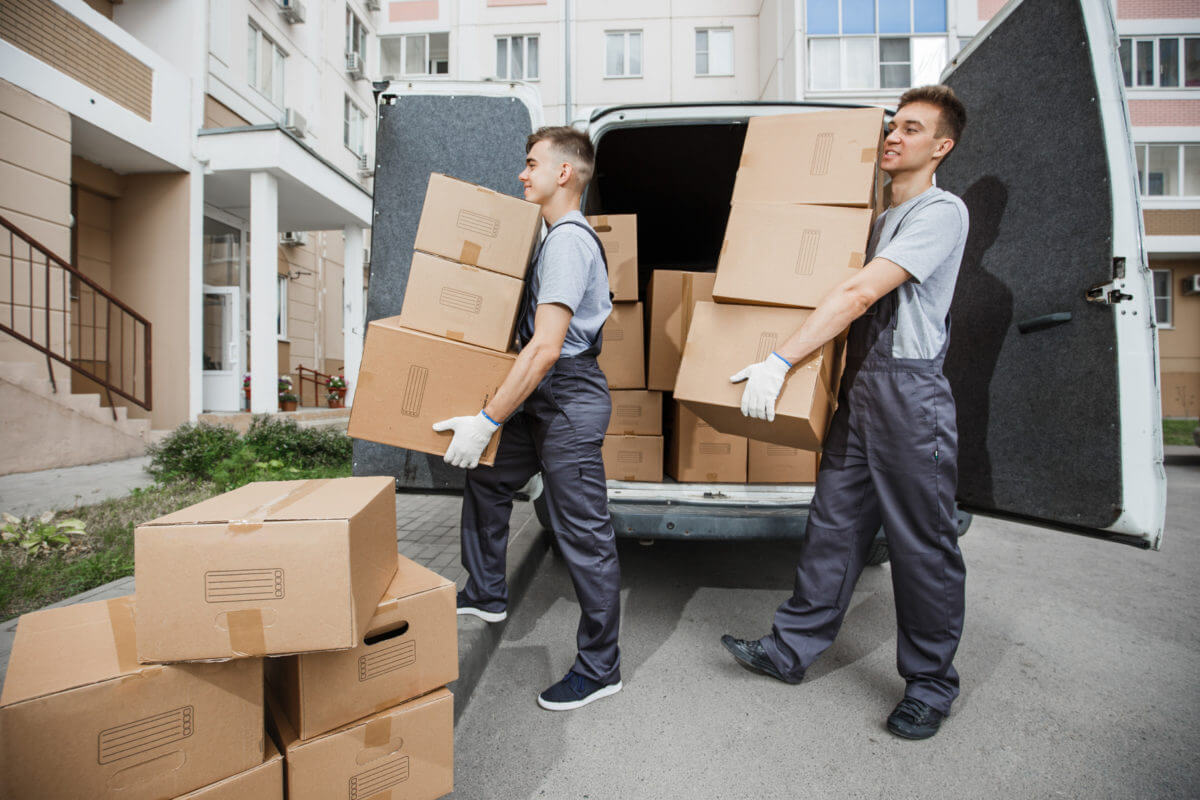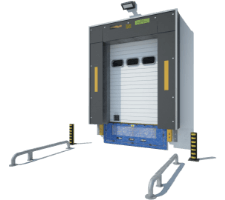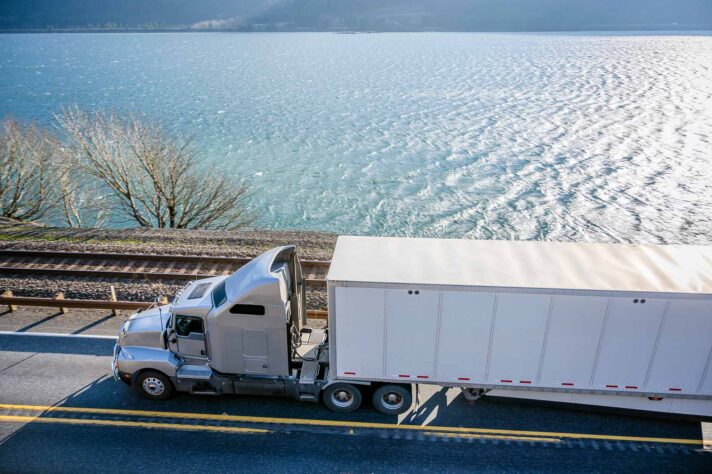Interstate moving can be a challenge, but fear not! Whether you’re relocating for a new job or embracing a fresh start, we’ve got you covered. Get ready to embark on a journey where cross-country movers become your best allies, and a reliable long-distance moving company ensures a seamless adventure. So, grab your relocation checklist and prepare for an exploration of conquering the challenges that come with an interstate relocation. Let’s make this transition an unforgettable experience!
Did you know those long-distance movers can help you seamlessly relocate across state lines Start planning early and research reputable relocation companies. Protect your belongings by packing them carefully. Understand your rights and responsibilities during the move. Estimate the duration and the long-distance moving cost in advance. Declutter and organize your belongings in advance.
Then create a detailed checklist and timeline. Take inventory and document your possessions. Update your address and notify relevant organizations. Finally, settle into your new home and make it feel like home by unpacking and organizing your belongings efficiently.
Interstate Moving Starts With Planning and Preparation
Success begins with thorough planning and preparation. It’s essential to assess your needs and create a timeline that outlines the necessary tasks. Consider factors like the size of your relocation, whether you’re relocating to a big city or a smaller town, and any special requirements you might have.
Determine the optimal relocation date, taking into account peak seasons and potential weather challenges. Next, create a detailed relocation checklist to keep track of all the important steps involved. Don’t underestimate the power of organization! Include tasks such as notifying utility companies, changing your address, and researching local services in your new area.
By planning your relocation meticulously, you’ll avoid the stress of realizing things you forgot to do at the last minute. Furthermore, establishing a relocation budget will help you stay on track financially. So, grab your moving-out list, put pen to paper, and let the exciting journey of interstate relocation unfold smoothly before your eyes.
Research and Hire a Reliable Interstate Moving Company
One of the most crucial steps is to research and hire a reliable cross-country moving company. Don’t underestimate the importance of entrusting your belongings to professionals.
Start by seeking recommendations for reputable cross-country moving companies from friends, family, or online reviews. Look for companies that specialize in long-distance moves and have a track record of delivering excellent cross-country moving services. Consider factors such as their experience, licensing, and insurance coverage.
Request multiple quotes to compare prices and services offered. Take the time to read through the contracts and understand the terms and conditions before making a decision. Remember, hiring long-distance movers is an investment in peace of mind during this transitional period. By choosing a reputable company, you’ll ensure a smooth and secure relocation experience.
Grab your pen and paper and start evaluating the quality of each relocation company How Much Does It Cost to Move Interstate?
So, how much does it cost to move out of state? The average cost of moving from one state to another can vary depending on various factors. These include the distance, the size of your household, the amount of belongings you’re transporting, and any additional services required, such as packing or storage.
It’s advisable to request quotes from different companies to get a better idea of the relocation costs from state to state. To reduce costs when relocating, consider decluttering and downsizing your belongings. The less you have to transport, the lower the overall cost may be. Exploring different options and comparing prices can help you find the safest and most reliable solution.
Use a Variety of Cross Country Moving Services
Utilizing a variety of services can not only make the process smoother but also help reduce costs while ensuring the safety of your belongings. Consider incorporating storage services into your relocation plan. This allows you to temporarily store items that you don’t need immediately, reducing the overall volume of items being transported and potentially lowering costs.
On top of this, opting for reliable auto transportation services can save you from the hassle of driving your vehicle long distances. It provides a convenient and safer way to transport your car to your new destination.
Also, skilled packers can efficiently and securely pack your belongings, reducing the risk of damage during transit. This can provide peace of mind and save you from costly repairs or replacements.
Organize and Declutter All of Your Belongings
Organizing and decluttering your belongings is a crucial step in making your move efficient and stress-free. Start by going through each room and sorting your items into categories: keep, donate, sell, or discard. Take an honest approach and evaluate if you truly need or have used certain items in the past year.
Create a decluttering checklist to help you stay focused and organized throughout the process. As you come across items you no longer need, consider organizing a garage sale to earn some extra cash while lightening your load. Alternatively, donate usable items to organizations like The Salvation Army, giving them a second life and supporting those in need.
Remember, the more you declutter, the less you’ll have to pack and transport. Make the most of this opportunity to start fresh in your new space by only bringing the essentials and items that truly hold value.
Lower the long-distance moving cost by decluttering your items before movers arrive Take Inventory and Document Your Possessions
Taking home inventory and documenting your possessions is an important step, especially when moving cross country. It helps you stay organized, track your belongings, and provide valuable documentation for insurance purposes.
Start by creating a comprehensive home inventory checklist. Go room by room, listing each item along with its description, condition, and approximate value. You can use a spreadsheet, a dedicated home inventory app, or even take photos and videos of your belongings. This process not only helps you stay organized during the move but also assists in case of any loss or damage during transit.
Avoid packing procrastination by tackling one room at a time and updating your inventory as you go. Remember to keep important documents, such as receipts, warranties, and appraisals, in a safe place.
Taking the time to document your possessions not only ensures a smoother move but also provides peace of mind knowing that your belongings are accounted for throughout the entire process.
Watch this informative video that provides clear instructions on how to make a home inventory.
The Next Thing Is Packing and Labeling
As you embark on the packing process, start by gathering high-quality packing materials such as:
- sturdy boxes,
- tape,
- bubble wrap,
- packing paper.
Carefully wrap and protect fragile items using ample cushioning materials to prevent damage during transit. Use appropriately sized boxes for different items, placing heavier items in smaller boxes and lighter items in larger ones to maintain balance and prevent overloading.
As you pack, take time to label each box with a note of its contents and the room it belongs to. This will make the unpacking process much easier and save you time and frustration in locating specific items later.
Create an Effective Packing System
Start by designating a specific area as your packing station. Gather all your supplies. Begin with one room at a time, focusing on packing similar items together. This helps streamline the unpacking process later on.
As you pack each box, label it clearly with the room it belongs to and a brief description of its contents. Use color-coded labels or a numbering system to further categorize and track your boxes.
Keep an inventory list of the items packed in each box, which will help you quickly locate specific belongings when unpacking. Also, consider packing an essential box containing items you’ll need as soon as you enter your new home. These are usually toiletries, important documents, and a change of clothes.
Reduce stress by introducing order and organization into the packaging system Embrace Different Packing Strategies for a Smooth Transition
One popular strategy is room-by-room packing, where you focus on packing one room completely before packaging the next. This approach keeps items organized and makes unpacking easier.
Another strategy is packing by category, where you group similar items regardless of the room they belong to. This works well for items like books, clothing, or kitchenware. Additionally, consider the “essentials first” strategy, which involves packing essential items you’ll need immediately in a separate box or suitcase. This ensures easy access to necessities during the first few days in your new home.
Settling Into Your New Home Is Also a Part of the Relocation Process
Relocating to a new home involves more than just the physical act of transporting your belongings. Settling into your new home is a vital part of the relocation process. It’s about establishing a sense of familiarity, creating a comfortable living environment, and adapting to your new surroundings. From preparing for your arrival at the new location to unpacking and organizing your belongings, this phase of the journey plays a crucial role in making your new house feel like home. Embrace the opportunities and challenges that come with settling in.
Prepare for Your Arrival at the New Location
Begin by ensuring that transferred utilities such as electricity, water, and internet are set up or scheduled for activation before you arrive. Contact service providers in advance to coordinate the installations or transfers.
Update your address with the post office, banks, subscriptions, and other relevant parties to ensure your mail is redirected to your new address. It’s also beneficial to research local amenities and services in the area, such as grocery stores, medical facilities, schools, and recreational facilities, to familiarize yourself with your new surroundings.
Before getting the chance to relax in the new space, prepare the house for your arrival Make a Plan to Unpack and Organize Your Belongings
Unpacking and organizing your belongings efficiently will help you settle into your new home more quickly. Start by creating a plan or strategy for unpacking. Prioritize unpacking essential items, such as kitchenware, bedding, and toiletries, so you can comfortably live while gradually unpacking the rest.
Begin with one room at a time, focusing on unpacking and arranging items systematically. As you unpack, consider the layout and functionality of each room, ensuring that furniture and items are placed in their intended locations.
Utilize creative storage solutions such as shelves, cabinets, and organizers to maximize space and maintain an organized environment. Take the time to declutter and discard any unnecessary items as you unpack, keeping your new space clean and clutter-free.
Follow Our Guide and You’ll Relocate Without a Fuss
Follow our comprehensive guide, and you’ll experience a seamless and hassle-free interstate move. From initial planning and preparation to researching reliable cross-country moving companies, we’ve covered all the essential steps to ensure a smooth transition.
If you’re looking for professional long-distance moving services and packing services, don’t hesitate to contact Cross Country Moving Company. Our team of experts is dedicated to providing top-notch service and handling your relocation needs with care. Whether you’re going to a neighboring state or across the country, trust us to make your move a stress-free and successful journey. Don’t let the complexities of interstate relocation overwhelm you.
FAQ
How Far in Advance Should I Start Planning for an Interstate Move?
It’s recommended to start planning for an interstate move at least 8-12 weeks in advance. This allows ample time for researching relocation companies, obtaining quotes, organizing logistics, and preparing your belongings for the move.
What Factors Should I Consider When Choosing an Interstate Moving Company?
When choosing an interstate relocation company, consider factors such as their experience in handling long-distance moves, licensing, and insurance coverage, customer reviews and reputation, pricing and estimates, range of services offered (packing, storage, etc.), and their ability to meet your specific needs.
How Can I Protect My Belongings During Transit?
To protect your belongings during transit, proper packaging is crucial. Use quality materials, such as sturdy boxes, bubble wrap, and paper, to secure fragile items. Label boxes as “Fragile” and consider using specialized packaging techniques for valuable or delicate possessions. You may also want to purchase insurance to provide additional coverage and peace of mind.
What Are My Rights and Responsibilities During an Interstate Relocation?
As a consumer, you have rights and responsibilities when moving interstate. The Federal Motor Carrier Safety Administration (FMCSA) provides a booklet called “Your Rights and Responsibilities When You Move” that outlines important information regarding estimates, contracts, liability, and dispute resolution. Familiarize yourself with these guidelines to ensure a smooth transition.
How Long Does It Typically Take To Complete an Interstate Relocation?
The duration of an interstate relocation depends on various factors, including the distance, route, size of the relocation, and any specific requirements. On average, it can take anywhere from a few days to several weeks to complete an interstate relocation. Your relocation company can provide you with a more accurate time frame based on your specific circumstances.
What Factors Determine the Cost of an Interstate Relocation?
The state-to-state movers’ cost is influenced by factors such as the distance, weight of the shipment, additional services required (packing, storage, etc.), time of year, accessibility, and any specialized items or handling required. Requesting quotes from multiple relocation companies and discussing the details of your relocation will help you get a clearer understanding of the cost involved.
What Happens if My Belongings Are Damaged or Lost During the Relocation?
In the unfortunate event that your belongings are damaged or lost, you should immediately notify your relocation company. They will provide you with instructions on how to file a claim. It’s important to document the damage or loss with photographs and keep all relevant paperwork, such as the inventory list and the bill of lading. The relocation company’s liability coverage or the optional insurance you purchased will determine the compensation you may receive.
How Do I Change My Address and Update My Information With Relevant Organizations?
To change your address, start by notifying the United States Postal Service (USPS) through their official website or by visiting your local post office. Update your address with important organizations and institutions such as banks, credit card companies, insurance providers, utilities, subscriptions, and any other relevant parties. You can do this online, over the phone, or by filling out change-of-address forms provided by the respective organizations.
Should I Consider Storage Options for My Belongings During the Interstate Move?
Depending on your circumstances, it may be beneficial to consider storage options. If there’s a gap between moving out of your current home and moving into your new one, or if you need temporary storage for any reason, renting a storage unit can provide a secure and convenient solution. Many companies offer storage services, so inquire about their options and availability.
What Steps Should I Take To Ensure a Smooth Transition for My Pets During the Relocation?
To ensure a smooth transition for your pets, first consult with your veterinarian for guidance specific to your pets’ needs. Update their identification tags and microchip information with your new address. Keep their routine as consistent as possible, and consider packing their essentials, such as food, water, medications, toys, and bedding, separately for easy access. During travel, provide a comfortable and safe space for them, and take breaks for exercise and bathroom breaks. It’s also essential to research and comply with any specific pet regulations and requirements for your new location.
How Should I Prepare Large or Bulky Items, Such as Furniture, for the Interstate Relocation?
When preparing large or bulky items like furniture, start by disassembling them if possible. Take photographs before disassembly to aid in reassembly later. Safely pack any loose parts, such as screws or hardware, and keep them in labeled bags. Use furniture pads, blankets, or bubble wrap to protect the surfaces during transport. Securely tape or tie furniture pieces together, and consider using furniture sliders or dollies to facilitate the entire process. If needed, consult with your relocation company or professional movers for specialized handling or disassembly/reassembly services.
Are There Any Specific Documents or Paperwork I Need to Have for an Interstate Relocation?
It’s important to have essential documents readily available. These may include your identification documents (such as your driver’s license or passport), relocation company contracts and estimates, your new lease or closing documents, insurance policies, and any important financial or legal documents. Keep these documents in a secure and easily accessible folder or box to ensure they don’t get misplaced.














